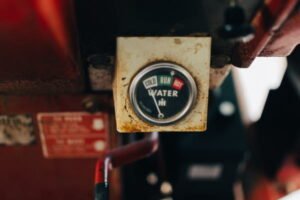At one time, in the deserts of Libya, scorching temperatures of 58 C were recorded. In total contrast, Vostok Station in Antarctica once plummeted to an astonishingly freezing -88 C. 
But when it comes to the business and particularly the industrial world, those sorts of temperature extremes are nothing. Physicists at the Large Hadron Collider have used lead ions to record temperatures of 5.5 trillion Kelvin, while NASA researchers have managed to cool sodium gas to one-half billionth of a degree above absolute zero – both stark representations of just how wildly temperatures can fluctuate – and be controlled – by us humans.
In the business and industrial world, we’ve progressed to a point at which we can control temperatures with astonishing and even fully automated ways, to manage manufacturing operations and processes. At the core of this progress in how we monitor temperature-sensitive operations in business is the temperature controller, which in a nutshell is any technology or device that helps to keep desired temperatures in check and stable by regulating what needs to be heated or cooled.
In our modern age, there are various kinds of temperature controller out there, all of which are designed to control temperatures while cutting out human error, saving time, minimising costs and automating processes. Processes like plastic production, food processing and storage, medicine and a vast range of other applications require meticulous temperature control, but the list goes on and on and on:
Ovens: Where there are things like furnaces, boilers, heat exchangers, ceramic kilns and – of course – ovens, there are temperature controllers behind the scenes, measuring, comparing and calculating temperatures to keep those operations running smoothly for optimal results.
Packaging: For the highest quality packaging, the operating temperatures and exposure times are crucial, whether the machinery in question feature glue applicators, melt functions, shrink wrapping or seal bars – and much more.
Plastics: Both heating and cooling with high levels of accuracy are also key to quality plastics manufacturing, with different specific temperatures required at different stages of the production process. We’re talking about things like hoppers, chillers, dryers, molding and extruding equipment.
Medicine: It’s not difficult to see why temperature control accuracy in critical healthcare applications relies so heavily on the latest temperature control technology, whether considering lab equipment, incubators, refrigeration and autoclaves. Without the right temperature, specimens can be spoiled, tests may be inaccurate or fail, and crystallisation growing chambers will not work effectively.
Food: For health and taste in complex, industrial-scale cooking and baking, temperature ovens are crucial, but no less sensitive are the requirements of the beverage industry, too – including brewing, blending and sterilisation.
In all of the industries and applications above, and in dozens of others on top of that, the rapidly evolving world of temperature controller technology continues to ensure safety, speed, quality, consistency and, ultimately, higher profits.
It’s all done with a vast and impressive range of modern temperature controllers that are increasingly cheap, small, accurate, easily installed and replaced, and brilliantly flexible and tolerant for the tasks they are asked to achieve. The jury is in, and the humble temperature controller is here to stay.
 TechManik Best Cheap Android Phones and Tablets | Android Apps
TechManik Best Cheap Android Phones and Tablets | Android Apps 

